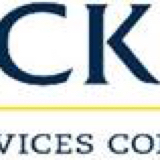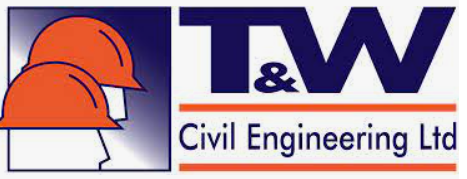Title Page
-
Document No.
-
Audit Title
-
Client / Site
-
Conducted on
-
Prepared by
-
Location
-
Personnel
General Public
-
Proper and visible signage in place
-
Free of Obstacles
-
Traffic control when required
-
Access to site controlled
Safety Board
-
Copies of the rescue plan procedures signed by the employer and supervisor of the underground workers shall be posted in conspicuous place on the project<br>Section 264(2).
-
Notice of project and any other Ministerial documents (MOL)
-
Notices describing how to sound a fire alarm posted in a conspicuous place<br>Section 248
Safety Board Contents
-
Health and Safety at Work: Prevention Starts Here
-
What You Should Know About The Ontario Employment Standards Act
-
Occupational Health and Safety Act and Construction Regulations (Green Book)
-
WHMIS Regulations<br>Reg 860
-
Company Occupational Health and Safety Policy
-
Work Place Violence and Harassment Policy
-
JHSC or Safety Rep Poster and posted, minutes, meetings
-
In Case of Injury Poster
-
First Aid Regulations 1101
-
Names and Location of trained first aid rep and copies of tickets posted?
-
WHMIS Binder
-
Emergency Procedures (including Fire Plan, and rally points)
-
ERP in place
Hygiene Section 260
-
Heated Change Rooms<br>Section 260(1)
-
Change room available and cleaned every 24 hours<br>Section 260(4)
-
1 shower and 1 wash basin with hot water for every 10 workers.<br>Section 260(6)
Emergency Responce
-
Emergency plan in place, communicated, signed and posted.<br>Section 264
-
Emergency numbers posted along with location description.<br>
-
First Aiders on site.<br>Section 261
-
1 first aid kit at entrance and in every shaft/tunnel<br>Section 262
-
First aid kits and rescue equipment inspected monthly.
-
At least 1 basket stretcher<br>Section 263
-
Rescue tanks available in appropriate location<br>
-
Tank capacity appropriate for tunnel length <br>Section 266
-
Rescue tank inspected within last 30 days<br>Section 266
-
At least 4 rescuers available on site. Check current training and practice records (refresh within last 30 days)<br>Section 265
-
Is there an effective communications system while underground (tunnel phone)<br>Section 269
Fall Protection Plan
-
Must have a written plan provided for a workplace by the employer, which must specify fall hazards, fall protection and procedures for rescue.
-
Lifelines and safety harnesses are inspected per use and are being used according to manufacturers manual.
-
Lifelines attaches to an independent firm structural member.
-
Are openings controlled to prevent unauthorized acess
-
Lifelines have adequate breaking strength and documentation on site?
Access and Egress
-
Check to see if check in/out procedure that accounts for all underground personnel is being used
-
Safe means of entrance and egress including latching gate and railing at top shaft.<br>Section 282(4)
-
Handrails/guardrails in place.<br>Section 282
-
Hoist required if shaft is more than 30m.
-
Adequate lighting in tunnel (1 light every 10’)
-
No ice or loose objects at top of shaft<br>Section 283
-
Walkway provided in tunnel (at least 1 foot wide)<br>Section 313(2)
-
Top worker on site when workers below<br>Section 246
Atmospheric Conditions
-
Air monitoring in effect<br>Section 330
-
Dust, fumes, vapours etc., controlled at source.
-
Adequate ventilation in the tunnel<br>Section 329
-
Air monitor calibrated and bump checked as schedules
Onsite Vehicles
-
Traffic plan followed, signallers used as required
-
Operated at safe speed and manner
Air Tools
-
Air supply disconnected for servicing and adjustments
-
Trigger mechanism operating correctly
-
Hoses do not present tripping hazard
-
Hoses wired together and stacked neatly out of the way
WHMIS
-
Appropriate WHMIS labels
-
Contents on Label
-
Stored in a manner compatible with contents
-
No leaks
Personal Protective Equipment
-
No loose clothing near moving equipment
-
Green patch boots with steel shank and metatarsal protection
-
Hard hat, eye protection, hearing and realities protection all available
-
Safety Harness and lanyards
-
High visibility clothing worn
-
Self rescue devices inspected and “at hand” in the tunnel<br>Section 268
Compressed Gas Cylinders
-
Secured, standing on end, empties capped<br>
-
Stored away from heat and sparks.
Electrical
-
Ground fault circuit interrupters
-
Cords elevated or covered, “no tripping hazards”, insulation intact
-
Energized rooms are locked
-
Temporary lighting does not have broken or missing bulbs
-
Emergency lights tested<br>Section 276
Fire Protection
-
Fire extinguishers are accessible, in working order and inspected
-
Fire extinguishers at the top and bottom of every shaft
-
Fire extinguishers at each electrical panel, TBM and locomotive
-
Standpipe, fire line and hose as required in tunnel<br>Section 251-254
-
Fire line outlet and valve every 45 metres
-
Hose every 46 metres
-
Hose stored on rack
-
Siamese connection at the surface of the shaft
-
Gasoline and flammable also stored in approved containers away from the shaft.<br>Section 255-256
-
Maximum 8 hours worth of fuel underground in storage<br>Section 255(4)
-
No combustibles stored underground other than for immediate use<br>Section 258
-
Emergency phone numbers listed
-
Temporary heating devices provided with adequate clearance.
-
Danger signs in hazard area
Hazard Controls
-
Lock out procedure being adhered to when applicable
-
WHMIS and SDS is current (within last 3 years)
-
Signs and tags are in use for lock out/ tag out
Housekeeping
-
Work area is clean and free of debris.
-
Spilled or leaked liquids are cleaned up.
-
Adequate garbage containers available.
-
Nails are bent over
-
Materials and equipment stored in a safe manner.
-
Combustible waste materials stored safely and removed from work site.
Ladders
-
Rings, rails and rope in good condition.
-
Placed 1 foot away from the base for every 4 feet in height.
-
Extends 3 feet above platform being accessed.
-
Barricaded when used in passageways and stairwells.
-
Secured ladder at top and bottom.
-
Remove broken ladders from site
Machine Guards
-
Prevent any contact with moving parts.
-
Prevent access to danger area during operation.
Powder Actuated Tools
-
Hearing and eye protection being worn.
-
Operators trained and authorized to use.
Repairs to Equipment
-
Out of order equipment is shut down and locked out
-
Suitable signs have been posted
-
Suspended and raised equipment is blocked prior to work.
-
All repaired equipment to be tagged and identified
Crane, Rigging Equipment and Slings
-
Crane inspection done
-
Qualified crane operator
-
Loaded in accordance with allowable workloads rated capacities. Is rigger qualified
-
Check for wear, safe workload tags on slings/chains
-
Check storage area -chains/slings should be hung up in dry, covered area.
-
Tag line is being used for all lifts
Scaffolds
-
All braces, connectors on, guard rails on open sides and ends, toe boards, planks of minimum 2”-10” width with 6”-12” overhang
-
Plumb and tied to structure
Inspection of Haulage Equipment
-
No internal combustion engines shall be used in a tunnel on a project without the prior written consent of a director.<br>Section 36
-
A haulage locomotive shall have suitable brakes, an audible bell and controls that can be operated only by a worker at the drivers station.<br>Section 310
-
You the inspector had inspected such job location to the best of your knowledge
-
Co-Inspector








